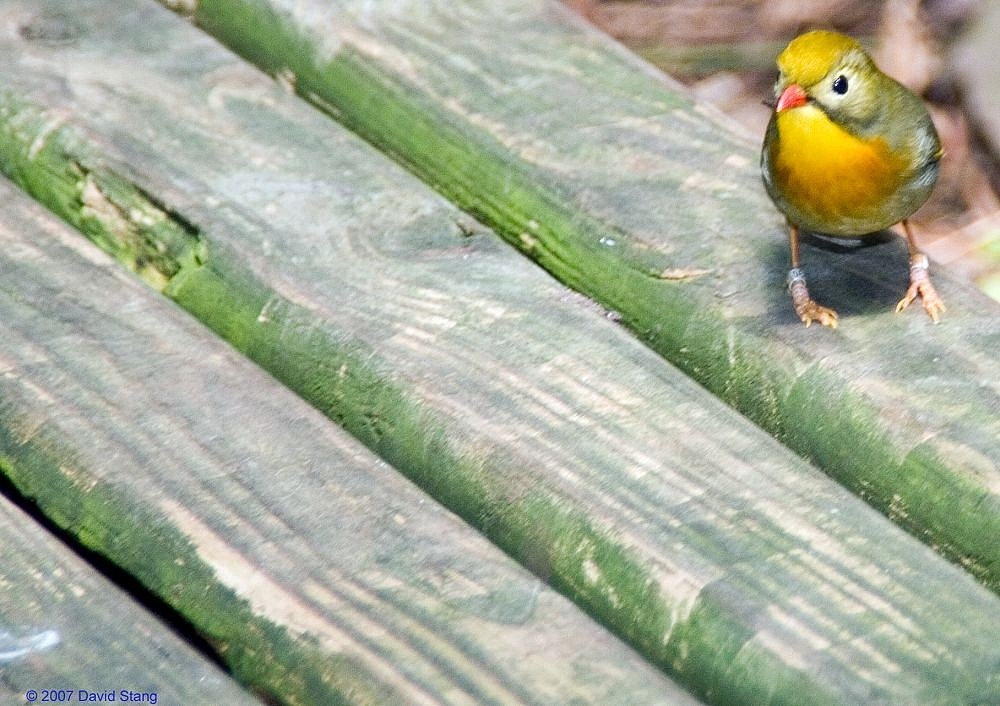Red-billed Leiothrix
A species of Leiothrix and Mesia Scientific name : Leiothrix lutea Genus : Leiothrix and Mesia
Red-billed Leiothrix, A species of Leiothrix and Mesia
Botanical name: Leiothrix lutea
Genus: Leiothrix and Mesia
Content
Description General Info
 Photo By Photo by David J. Stang , used under CC-BY-SA-4.0 /Cropped and compressed from original
Photo By Photo by David J. Stang , used under CC-BY-SA-4.0 /Cropped and compressed from original Description
The leiothrix is about six inches in length, generally olive green, and has a yellow throat with orange shading on the breast. It also has a dull yellowish ring around the eye that extends to the beak. The edges of the wing feathers are brightly colored with yellow, orange, red and black and the forked tail is olive brown and blackish at the tip. The cheeks and side of the neck are a bluish gray color. The female is a lot paler than the male and lacks the red patch on the wings. It doesn't fly frequently, except in open habitats. This bird is very active and an excellent singer but very secretive and difficult to see. 
Size
14 cm (5.5 in)
Colors
Green
Yellow
Red
Gray
Blue
Orange
Life Expectancy
8-15 years
Nest Placement
Shrub
Feeding Habits
Red-billed Leiothrix consumes both plant and animal matter, including fruits like strawberries, papaya, and guavas, as well as insects and mollusks. Typically foraging in lower vegetation layers, they gather food from leaves and dead wood.
Habitat
Red-billed Leiothrix occupies forested environments with dense undergrowth, spanning evergreen, pine, and mixed forests, as well as scrublands and forest edges. Habitats often include bamboo and dense vegetation. Adaptable to various altitudes, they prefer elevations between 900 to 2400 meters. Feral populations are also found in wet and dry forests rich in fruit resources.
Dite type
Insectivorous
General Info
Feeding Habits
Bird food type
Behavior
The presence of the avian malaria parasite has been found in the blood of this species. 
Distribution Area
The leiothrix is usually found in India, Bhutan, Nepal, Burma and parts of Tibet. This species is a bird of the hill forests, found in every type of jungle though it prefers pine forests with bushes. It has also been found at elevations ranging from near sea level to about 7,500 feet. In Japan it prefers forests of Abies and Tsuga with a dense understorey of bamboo. The species was introduced to the Hawaiian Islands in 1918 and spread to all the forested islands except Lanai. Its population on Oahu crashed in the 1960s and it disappeared from Kauai, but is now common and increasing on Oahu. The leiothrix was released in Western Australia but it failed to become established. This species was also introduced in Great Britain but permanent establishment was unsuccessful. It was introduced to France, where it is now established in several areas, and Spain where it is increasing and spreading from the Collserola Park. In Japan, naturalised populations of what is probably the nominate subspecies this species have been recorded since the 1980s and it has become established in central and southwestern Japan. It is also established on the Mascarene island of Réunion. The species has also been introduced in Italy where three major populations can be identified (Tuscany and Liguria, Latium, Colli Euganei) and there are several areas at high risk of invasion. 
Species Status
Not globally threatened.
Scientific Classification
Phylum
Chordates Class
Birds Order
Perching birds Family
Laughingthrushes Genus
Leiothrix and Mesia Species
Red-billed Leiothrix